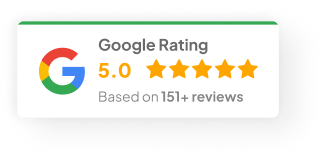01 Oct 25
Is WooCommerce Secure Enough for Enterprise-Level Businesses?
When a business grows into enterprise scale, security shoots straight to the top of the list. You’re not just running a store anymore—you’re dealing with thousands of customers, sensitive data, and a steady stream of payments. If something breaks, it’s not just a bad day. It’s a headline.
WooCommerce is a name that always comes up in this space. It’s popular, flexible, and frankly, familiar to a lot of teams. But the question big businesses keep asking: is it safe enough?
The short answer—yes, but only if it’s managed the right way.
WooCommerce’s Security Track Record
WooCommerce runs more than 8 million websites. That’s huge. The upside is a giant community and constant eyes on the code. The downside? Big target for attackers.
It hasn’t been flawless. Wordfence tracked roughly 40 vulnerabilities in WooCommerce over the years—things like cross-site scripting and SQL injection. Nothing unusual in the software world, and most of those were fixed quickly.
In fact, a 2024 report logged 64 vulnerabilities patched in WooCommerce in just that year. That says two things: attackers are interested, and developers are paying attention.
And security practices have improved. Over 90% of WooCommerce stores now run SSL certificates That’s a basic must-have, but it wasn’t always the case.
Bottom line: WooCommerce has had issues, but it’s proven responsive and resilient.
What WooCommerce Gets Right
A few things tilt in its favor:
- Open-source transparency – Anyone can audit the code. That includes researchers, developers, and security pros.
- Frequent updates – Vulnerabilities get patched fast if you keep your site current.
- Strong ecosystem – Firewalls, scanners, 2FA plugins, you name it. The WordPress security market is massive.
- Room for custom defenses – Enterprises can plug in their own layers: container setups, intrusion detection, advanced firewalls.
Where the Risks Show Up
Enterprises hit different challenges than small shops. The main weak spots look like this:
- Plugins and themes – Third-party code is the #1 doorway for attackers. One outdated plugin can open the whole system.
- Hosting responsibility – WooCommerce doesn’t host. That means server security, patching, and database protection are all on the business or host.
- Update delays – Enterprises often hold off on updates to avoid breaking custom builds. The lag time is exactly when attackers move.
- Scaling properly – WooCommerce wasn’t designed for millions of orders by default. Without solid architecture—load balancers, caching, database tuning—performance dips and security gaps appear.
- Regulatory compliance – PCI DSS, GDPR, HIPAA—none of that comes prebuilt. It all has to be added in.
How Enterprises Can Lock It Down
So yes, WooCommerce can be made secure. But it takes a layered approach and constant attention.
Some of the usual must-dos:
- Hosting and infrastructure – Stick with enterprise-grade managed hosting. Keep PHP, MySQL, and everything under the hood updated. Add firewalls, CDNs, and DDoS protection.
- Plugin vetting – Keep plugins to a minimum. Use only actively maintained ones. Test before rollout.
- Update discipline – Apply core and plugin updates quickly. Use a staging environment to catch issues before going live.
- Access controls – Enforce strong passwords, use 2FA, and restrict roles to the bare minimum.
- Encryption and payments – HTTPS site-wide. PCI DSS-compliant gateways only. Encrypt sensitive data at rest if stored.
- Monitoring and response – Intrusion detection, pen testing, real-time logs, and a clear incident plan.
- Compliance – Build GDPR handling, PCI DSS safeguards, and breach notification policies into the workflow.
How It Stacks Up Against Alternatives
Other enterprise platforms like Shopify Plus, BigCommerce Enterprise, or Magento Commerce bundle hosting and compliance into the deal. That takes pressure off internal teams but comes with higher costs and less freedom to customize.
WooCommerce is the opposite. More work, more responsibility, but more control. For enterprises with strong IT and security teams, that control can be an edge. For those without, managed platforms are often safer.
Wrapping It Up
So, can WooCommerce handle enterprise-level security? Yes. But only for businesses willing to stay on top of it.
The platform is flexible, transparent, and backed by a massive community. It’s shown that it can adapt and recover from vulnerabilities. But the responsibility doesn’t go away—it’s on the enterprise to keep every layer tight, from hosting to compliance.
For organizations that want freedom and control without being locked into a vendor, WooCommerce is still one of the strongest contenders.
What do you think—would your team rather handle the extra responsibility for flexibility, or lean on an all-in-one platform?


